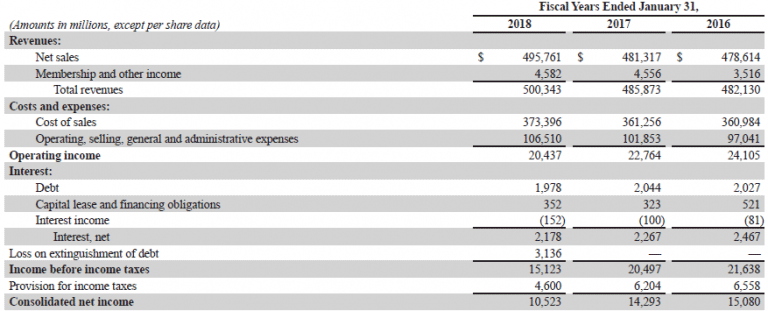
The accounting rules applied to diluted shares aim to prevent that outcome. For both basic EPS and diluted EPS, the earnings figure should be the same. A basic share count equals the average count of only the shares that are issued and outstanding during the period. EPS, or earnings per share, is a financial figure studied by investors, traders, and analysts.
What Is A Good Earnings Per Share?
Still, adjusted EPS can sometimes provide a better “look-through” on the company’s profitability and performance, if the metric is not abused by management teams. EPS by itself doesn’t tell you that much about a company, but rather offers a picture of profitability at a point in time, often a given quarter or year. So EPS alone doesn’t tell you if a company’s profits are rising or falling, though you could compare EPS over years to see how the company is performing or review analysts’ estimates to see how it might do in the future. This does mean that basic share count will change from period to period. If a company repurchases shares, its share count will decline, which reduces basic share count during that period. If, in contrast, it issues shares to employees or in consideration for an acquisition, the share count will increase.
Basic Earnings per Share vs. Diluted Earnings
- EPS by itself doesn’t tell you that much about a company, but rather offers a picture of profitability at a point in time, often a given quarter or year.
- Other financial metrics can also give investors a fuller view of the company and its prospects.
- $3 per share in EPS would be impressive if the company earned only $1 per share the year before.
- Due to its significance for investors and other decision makers, many countries and states require publicly held commercial entities to calculate and report their EPS number in published financial statements.
- It is also a major component of calculating the price-to-earnings (P/E) ratio, where the E in P/E refers to EPS.
Sometimes an adjustment to the numerator is required when calculating a fully diluted EPS. For example, sometimes a lender will provide a loan that allows them to convert the debt into shares under certain conditions. PwC refers to the US member firm or one of its subsidiaries or affiliates, and may sometimes refer to the PwC network. This content is for general information purposes only, and should not be used as a substitute for consultation with professional advisors. The chart shows that in 2000, the difference between Intel’s basic EPS and diluted EPS amounted to around $0.06.

How to read an earnings report
Then divide that amount by the average number of outstanding common shares. Since basic EPS relates to earnings available only to common shareholders, the current year’s preferred dividends reduce from net income. The earnings per share (EPS) is a measure of the profit shown in a company’s financial statements. The amount earned by each share of common stock is represented by basic earnings per share in the company’s income statement. Basic earnings per share is a rough measurement of the amount of a company’s profit that can be allocated to one share of its common stock. Businesses with simple capital structures, where only common stock has been issued, need only release this ratio to reveal their profitability.
Earnings Per Share (EPS)
But in actuality, stock splits and reverse splits can still affect a company’s share price, which depends on the market’s perception of the decision. Therefore, to summarize the net impact on the earnings per share (EPS) line item, new stock issuances cause a company’s EPS to decline, whereas stock buybacks result in an artificially higher EPS. On a fully diluted basis, our company has a total of 180 million shares outstanding.
Earnings per share (EPS) and diluted EPS are profitability measures used in the fundamental analysis of companies. EPS takes into account a company’s common shares, whereas diluted EPS takes into account all convertible securities, such as convertible bonds or convertible preferred stock, which are changed into equity or common stock. Earnings per share (EPS) means the income earned by each common share of a company. It is computed only for common stock and sometimes referred to as earnings per common share. EPS is an extensively used metric to evaluate profitability performance of commercial entities and receives much attention in financial news and discussions worldwide. Due to its significance for investors and other decision makers, many countries and states require publicly held commercial entities to calculate and report their EPS number in published financial statements.
When analysts or investors use earnings per share to make decisions, they are usually looking at either basic or diluted earnings per share. A pro forma or continuing earnings per share is a variant of earnings per share that excludes one-time events and extraordinary occurrences. This extra amount is generally given to shareholders if the dividend payments made to common new hire paperwork checklist shareholders surpass the agreed amount set initially. Preferred shares are classified into cumulative preferred, non-cumulative, participating preferred, and convertible preferred stocks. Because they are generally entitled to a certain dividend and are reimbursed in the event of a company’s collapse, preferred stockholders have less risk than common stockholders.
That figure uses net profit adjusted for one-time factors such as fees related to a merger, or other unusual costs. It may also exclude the cost of share-based compensation for employees, since that compensation can vary widely from year to year. That is the company’s profit after all expenses, including operating expense, interest paid on borrowings, and taxes.